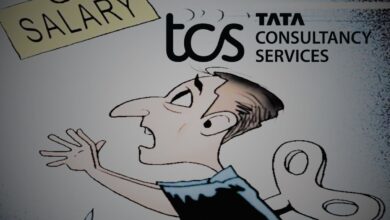More Job Losses, Vistara Offers VRS To Ground Staff Ahead Of Air India Merger; 37,260+ Employees Laid Off By 130+ Startups Since 2022
Vistara is in strategic preparations for its upcoming merger with Air India which will create India's largest international carrier, has introduced a VRS scheme for its ground staff. The step reflects the broader trend of workforce rationalization seen across various industries worldwide due to growing economic uncertainties. Since the onset of the funding winter in 2022, an estimated 37,264 employees have been laid off by at least 130 Indian startups. Nearly 25 Indian edtech startups, including all seven edtech unicorns, have fired 14,816 employees. More than 755 employees have been fired by six startups so far this year, indicating the fact that the situation around job cuts has hardly improved.

Vistara, a full-service carrier and a 51:49 joint venture between the Tata Group and Singapore Airlines, is set to merge with Air India by the end of this year.
On Monday, Vistara announced that it has introduced a Voluntary Retirement Scheme, VRS, exclusively for ground staff.
The airline stated that this scheme offers the highest possible compensation to its employees, following either the ‘Gujarat Pattern’ or the ‘Department of Heavy Industries Pattern,’ whichever provides more benefits.
According to the scheme details, employees will be entitled to statutory benefits like gratuity and provident fund (PF), as well as non-statutory benefits such as medical insurance and staff travel privileges.
The VRS is available to permanent ground or non-flying staff with over five years of continuous service and will be open until August 23.
The announcement follows Air India’s introduction of a similar VRS and Voluntary Separation Scheme (VRS) for eligible staff, which will run until August 16.
Both airlines aim to streamline their workforce ahead of the planned merger to enhance operational synergies and efficiency. Air India employs approximately 18,000 people, while Vistara has about 6,500 employees.
In addition to the lump sum, eligible employees will receive statutory benefits, including gratuity, provident fund, and leave encashment.
Vistara also stated that it will provide medical insurance and staff travel benefits until March 31, 2025, to ensure continued support; after this date, staff travel benefits will be subject to the airline’s retired employee policy.
Last month, the National Company Law Tribunal (NCLT) granted crucial approval for the merger of Vistara and Air India, paving the way for the creation of India’s largest international carrier and the second-largest domestic airline.

The Trend That Sees No Stopping
Meanwhile, mass layoffs have been occurring in various industries worldwide, including tech giants like Google, Amazon, Meta, Dell, and Microsoft, retail giants like Walmart and McDonald’s, financial institutions like Wells Fargo, Barclays, Goldman Sachs, Citi, and Morgan Stanley, consulting firms like Bain & Company, Accenture, KPMG, and Deloitte, and manufacturing companies like General Motors and 3M.
The list is long; companies are reducing their workforce in response to escalating economic uncertainties, which are affecting smaller businesses and startups in sectors such as fintech, crypto, enterprise SaaS, transportation, digital media, and big companies as well.
The global technology sector is facing one of its most challenging years in recent history, with nearly 240,000 employees laid off so far in 2023.
In addition to technology companies, sectors like warehousing, transportation, construction, manufacturing, wholesale trades, and real estate are also on the verge of significant employment losses if they haven’t already begun.
The Age Of Silent Layoffs
At least 130 Indian startups have laid off an estimated 37,264 employees since the onset of the funding downturn in 2022; nearly 25 Indian edtech firms, including all seven edtech unicorns, have terminated 14,816 employees.
The trend of employment cuts persists, with six startups having already let go of over 755 employees this year.
According to an industry association, Indian companies, especially those in the information technology (IT) services sector, are engaging in “quiet firing” or “silent sacking.”
This term describes the practice of creating unfavorable conditions that force employees to resign voluntarily.
The reason behind this slow poison is to encourage resignations, as then companies avoid paying severance compensation, thus reducing costs. This approach includes creating a deteriorating work environment characterized by overwork, stalled promotions, and lack of support.
The Harvard Business Review noted that layoffs are a significant expense for companies that must provide severance packages to terminated employees. For instance, Microsoft’s second-quarter earnings last year included a $1.2 billion expense due to redundancies and other restructuring initiatives.
This trend is also gaining momentum in India too.
In 2023, the IT/ITeS sector saw “silent” redundancies that resulted in the loss of approximately 20,000 technical employees, as reported by the All India IT & ITeS Employees’ Union (AIITEU); these cuts affected IT services companies of all sizes.
So, how would one know if one is under the ‘slow poison’ radar?
Indicators of quiet firing include changes in job responsibilities, compensation, working conditions, and communication with supervisors.
Likewise, employers may reassign significant job responsibilities, demote employees, or alter their job descriptions as part of this practice.
Additionally, affected employees may find themselves excluded from promising new opportunities or given unreasonable performance objectives and might be assigned tasks that are either unfavourable or inconsistent with their position, or they may be denied promotions they have earned.

Slow Poison Tactics
In terms of compensation, quiet termination tactics may involve a slew of measures, such as pay reductions, requiring employees to work additional hours or overtime without compensation, and withholding anticipated annual bonuses or raises.
“Ghosting” Is Not Just A Social Phenomenon
Under “Ghosting”, employees may receive excessively severe feedback or consistent criticism, leading to evaluations that are perceived as unjust.
They may also experience “ghosting,” where meetings are repeatedly cancelled, or essential information regarding their work and responsibilities is withheld.
Additionally, their achievements may go unrecognized, or, in the worst-case scenario, credit for their efforts may be given to others.
Hence, these warning signs collectively suggest a strategy of quiet firing, aimed at undermining an employee’s position and encouraging them to leave voluntarily.
Organizations terminate personnel based on their operational circumstances.
For instance, Teradata, a cloud analytics and data platform company headquartered in San Diego, terminated approximately 35-40 employees at its Hyderabad campus after laying off about 1,100 employees worldwide in 2022. According to LinkedIn, Teradata employs over 10,000 individuals globally.
Reasons for Mass Layoffs
The COVID-19 pandemic accelerated the shift to online work and led technology companies to a hiring surge to meet the increased demand.
However, these organizations are now scaling back their workforce due to various factors.
While companies often cite restructuring and efficiency improvements as reasons for layoffs, the underlying causes include overhiring, economic downturns, and the growing impact of Artificial Intelligence (AI).
AI is particularly appealing to organizations focused on enhancing efficiency and reducing costs. While AI automates certain tasks, it also creates new opportunities in the fields of artificial intelligence and machine learning.
However, the post-pandemic environment has proven to be different from initial expectations, requiring businesses to adapt swiftly to current realities.

Should We Be Concerned Going Forward?
Yes, the global nature of the current situation means its effects are far-reaching.
Layoffs, akin to economic crises, create ripple effects that extend worldwide and the same has already been witnessed in India.
High levels of globalization and geopolitical unrest contribute to market volatility leading to lower demand for certain products or services affecting spending patterns.
Additionally, the shift to remote and hybrid work models renders some traditional roles obsolete. Moreover, businesses are implementing cost reductions to address pandemic-related losses or to improve profitability. Production and revenue generation are impacted by disruptions in supply chains (The Red Sea altercations)
Likewise, the rise in digital services demands adjustments in staffing across affected industries. The global wave of layoffs has intensified competition in India’s job market, leading to higher unemployment rates and greater challenges for job seekers.
The global economic slowdown has also reduced demand for Indian exports, affecting the country’s trade balance. This situation is worsened by protectionist measures adopted by various countries in response to the pandemic or political factors.
Facts And Figures
Since the onset of the funding downturn in 2022, 130 Indian startups have laid off around 37,264 employees.
The edtech sector has been particularly hard-hit, with 25 Indian edtech startups, including all seven edtech unicorns, firing 14,816 employees.
Additionally, six startups have laid off over 755 employees this year, indicating that the situation regarding job cuts remains challenging.




